#the norberts legacy
Text


#sims 4#ts4#sims 4 legacy#the norberts#the norberts legacy#Nora Notley#Nimbley Bimbley Notley-Norberts#Nicholas Norberts#the NorbertsG:1#the NorbertsG:2#sims 4 screenshot#sims 4 gameplay#the sims 4
5 notes
·
View notes
Text


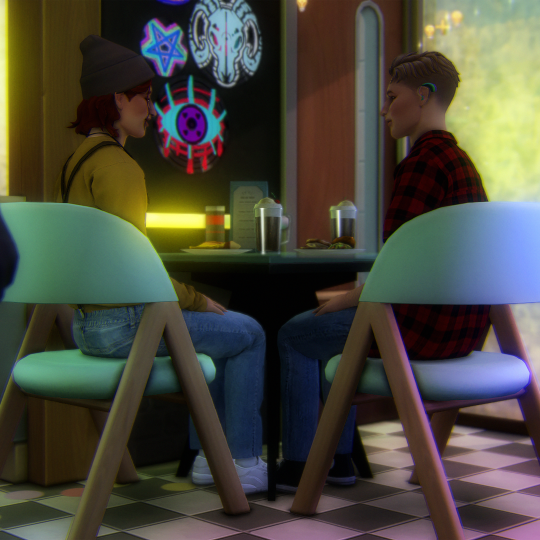



The boys are in an open relationship, but they don't really date anyone else :D And they're so different, I don't even know how they got together but it works 4 them for some reason 🤌🤌🤌

Winter is in my save Christmas is coming soon 🥳🎄
#sims 4#ts4#sims 4 gameplay#sims 4 legacy#valter legacy#ts4 legacy#Nigel Perish#Norbert Goth#ts4 gameplay#sims gameplay
20 notes
·
View notes
Text
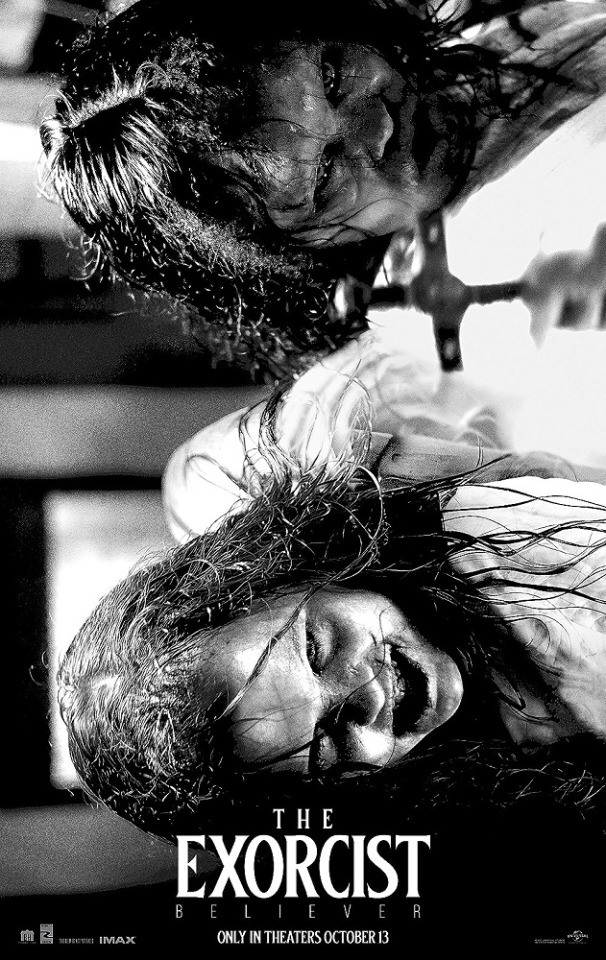
THE EXORCIST: BELIEVER (2023)
Starring Leslie Odom, Jr., Ann Dowd, Jennifer Nettles, Norbert Leo Butz, Lidya Jewett, Olivia Marcum, Ellen Burstyn, Okwui Okpokwasili, Raphael Sbarge, E.J. Bonilla, Antoni Corone, Danny McCarthy, Norah Murphy, Chandu Kanuri, Richard Carr III, Malena Cunningham Anderson, Emily Rachel Gordon, Linda Boston, Nick Benas and Linda Blair.
Screenplay by Peter Sattler and David Gordon Green.
Directed by David Gordon Green.
Distributed by Universal Pictures. 121 minutes. Rated R.
David Gordon Green and Danny McBride have spent the last few years briefly rejuvenating and then quickly continuing to sully the legacy of the popular horror film franchise Halloween. And let’s face it, multiple sequels and reboots had done enough harm to the series’ reputation even before Green and McBride got their hands on the IP, but Halloween Kills and Halloween Ends were just as bad as any of the multiple terrible earlier sequels.
Now they have moved on to take on another legendary horror franchise, one which also had a terrific first film followed by some horrifically bad sequels. (The Exorcist II: The Heretic, anyone?) However, the original 1973 The Exorcist was a revelation at the time. People in the audiences at the time were passing out in the aisles from horror. But the world has changed a lot over the years, and what was shocking in 1973 is not necessarily going to be so extraordinary 50 years later. The new filmmakers are looking to make a trilogy of this new reboot. Let’s hope they do a better job this time around.
From the evidence of The Exorcist: Believer, whether or not that is going to happen is… maybe? But they will have to work harder than this.
The Exorcist: Believer has some scary parts and some interesting philosophical and religious viewpoints, but sitting through it you mostly feel: what’s really the point of this?
Sort of like the Halloween films, they are somewhat trying to deconstruct horror tropes – and I guess that’s a good thing. Also like the Halloween series, The Exorcist: Believer basically completely ignores the existence of all the other movies in the series other than the classic original film. That should only be a good thing.
So why doesn’t it really work?
The story is basically a stand-alone storyline, although for the fans the movie brings back the original star Ellen Burstyn – still radiant and vibrant at 90 years old. Sadly, it seems a bit of a waste to bring Burstyn back – and believe me, when she is on screen, she is phenomenal, the best part of this movie – only to quickly… umm… mostly sideline her.
Instead, Believer tells the story of two young teen southern girls (Lidya Jewett and Olivia Marcum) who disappear for three days, and when they come back, they are acting increasingly odd. Eventually it is decided that during their three lost days, a demon must have possessed them. (It is never exactly explained how a demon can be in two different bodies at once – I’m no expert, is that really a thing?) Of course, two girls mean twice the cursing, twice the scary phenomena, twice the worried parents. It also sets up a “Sophie’s choice” that the demon eventually torments the parents with.
Interestingly, this exorcism is somewhat removed from religion. The Catholic church refuses to cooperate with the exorcism (seeing a PR disaster in the waiting), although one priest (EJ Bonilla) briefly helps out after the others are well into process of the exorcism, to extremely negligible effect.
Instead, the ritual is handled by the parents (a church-going couple [Jennifer Nettles and Norbert Leo Butz] and a faith-challenged dad [Leslie Odom Jr.]), a local preacher, and a once aspiring nun who has been working for decades as a nurse (Ann Dowd).
One of the big problems, I suppose, is that unless you are very into the religious aspects of the thing – and perhaps even if you are a total true believer – an exorcism is a strange and totally inhumane procedure. It’s chaotic, clunky, and brutal, and sadly this filmed approximation of an exorcism makes the movie share those traits.
It’s too bad, because the new film does try exploring some interesting themes – family dynamics, faith (and the lack thereof), guilt, community and missed opportunities. Sadly, the ugly and frenzied climax overshadows what little intrigue the filmmakers have stirred up. And frankly the ending feels unfinished, like Believer is the first act of a three-act play, which for better or worse, it is.
Jay S. Jacobs
Copyright ©2023 PopEntertainment.com. All rights reserved. Posted: October 5, 2023.
youtube
#The Exorcist: Believer#2023#Movie Review#Leslie Odom Jr.#Ellen Burstyn#Ann Dowd#Jay S. Jacobs#Youtube
3 notes
·
View notes
Text
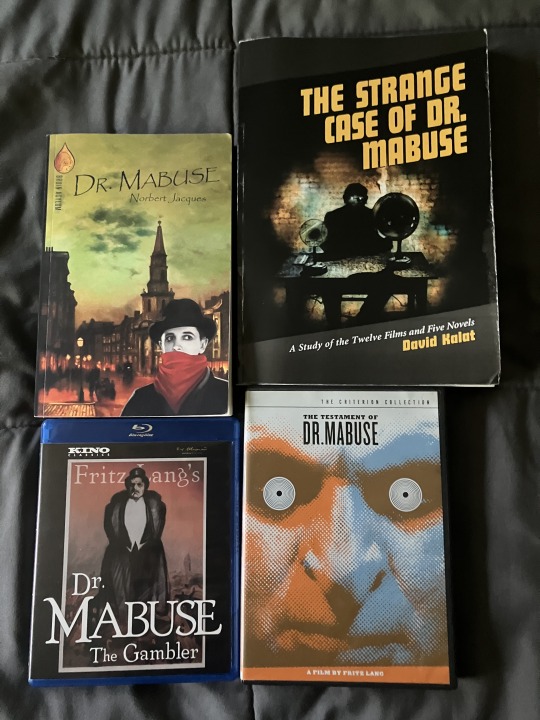
This is my Dr. Mabuse collection that I currently have ever since I became a fan of the Dr. Mabuse series, exclusively the original novel written by Norbert Jacques and the film trilogy directed by Fritz Lang which consist of Dr. Mabuse, the Gambler (1922), The Testament of Dr. Mabuse (1933), and The 1000 Eyes of Dr. Mabuse (1960). Both the original two-part silent epic Dr. Mabuse, the Gambler and the sequel, The Testament of Dr. Mabuse are highly recommended.
David Kalat is an expert Dr. Mabuse scholar and his examination for The Strange Case of Dr. Mabuse is well-informed and meticulous. He also provides historical context for the book. Kalat also elaborates on the prevailing themes and motifs that define the Dr. Mabuse series and of Mabuse himself. In addition to discussing the Dr. Mabuse franchise, the character's legacy, and other films inspired by Dr. Mabuse - he goes into detail about the creator of Dr. Mabuse, Norbert Jacques and of the world-renowned film director Fritz Lang, and how Dr. Mabuse impacted both their respective careers. With Lang, several of his non-Mabuse films in his filmography are in the spirit of Dr. Mabuse, including 1928's Spies and 1953's The Big Heat.
Kalat also provided the audio commentary tracks for the Criterion release of The Testament of Dr. Mabuse and the Eureka! releases of Lang's Dr. Mabuse trilogy.
The Strange Case of Dr. Mabuse was published back in 2001 and overall the book provides an excellent and thorough analysis.
It proves that even today Mabuse is still very relevant.
#norbert jacques#fritz lang#david kalat#rudolf klein-rogge#dr. mabuse der spieler#dr. mabuse the gambler#dr. mabuse der spieler (1922)#the testament of dr. mabuse#das testament des dr. mabuse (1933)#the strange case of dr. mabuse#dr. mabuse#watch the 1922 silent film and testament - they are masterpieces#my collection#my post
2 notes
·
View notes
Text
2022 Reading Log, pt 25
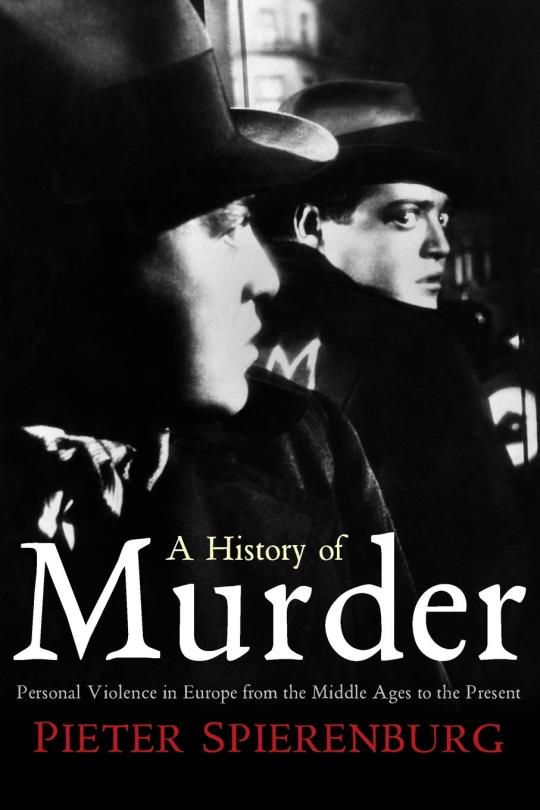
121. A History of Murder: Personal Violence in Europe from the Middle Ages to the Present by Pieter Spierenburg. I wish I could recommend this book, because it has a lot of interesting discussion of how toxic masculinity and honor culture leads to violence, and how this reduced in Europe as honor became seen as more of an internal quality of morals and behavior rather than an external quality of reputation and posturing. I cannot recommend it, however, because the book is also incredibly racist, especially in the last 50 pages as we move into the modern era. Spierenburg blames the up tick in violence in Europe between 1970 and 2000 on immigrants and “the influence of hip-hop and African American culture”. He also dismisses antisemitic violence as a factor in the Middle Ages and early modern period, and only discusses it around the 19th and 20th centuries, where he talks about blood libel as a cause for murder but never gets around to actually saying that blood libel is libelous. This is especially wild, since his academic mentor, Norbert Elias, was a Jewish refugee during the Holocaust, and Spierenburg served on the board of the Netherland’s center for Holocaust studies!
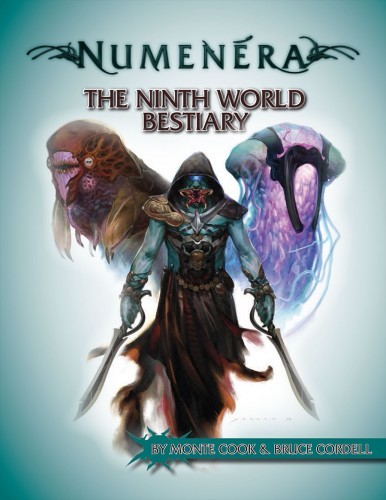
122. Numenera: The Ninth World Bestiary by Monte Cook and Bruce Cordell. Numenera has always been vaguely on my radar, since a number of artists I follow have done art for it, and I’m into weird monsters. Having now read the first dedicated monster book for this RPG, I am intrigued enough to actually want to check out the core book, which is a high honor for me. The setting is post-post apocalyptic, in a vaguely medieval society a billion years into Earth’s future, where magical technology has prevented the sun from expanding and eight previous hyper-advanced civilizations have ruins to explore. And have generated and attracted a wide variety of weird monsters. This bestiary does a very good job of feeling like Weird Fiction, from the pulp roots of the early 20th century to the modern New Weird movement of the Vandermeers. To give you an idea of some of the monsters in here, we have the falling maw, an intelligent singularity; the latos, a giant robot whose head contains a preserved city, a la the bottled city of Kandor; the jurulisk, a colonial entity made of one dimensional animals joining together into a three dimensional shape; and the weaponized meme, which has to be fought entirely mentally because it is a word, phrase or image that eats your brain if you think about it. There’s also a gallery of NPCs in the back, who would probably be more meaningful to me if I had read the setting book first, but are written to have plot uses and be potentially either allies or enemies, depending on the party and the context of the encounter.

123. The Fabric of Civilization: How Textiles Made the World by Virginia Postrel. This book looks at fabric as technology, and how their development and innovations had strong ripple effects in building cultures both historical and modern. The book is organized via the fabric making process, from source material to making thread, from thread to cloth, from cloth to clothes, to sellers and traders to consumer preferences. I learned quite a bit, and the author’s thesis is well supported by ideas like how the development of arithmetic relates to organizing threads for weaving cloth, how the creation of hybrid cotton impacted the 19th century slave economy as much if not more than the cotton gin, and how cloth merchants were de facto banks in Europe for centuries before national centralization became the rule of the land. However, the author is clearly more enamored with capitalism and neo-liberalism than I am, having very nice things to say about a variety of corporations and the development of free-market economies in general. The traders chapter, for example, is mostly a paean to the idea of the middleman, and even includes a sympathetic portrayal of the Lehman brothers!
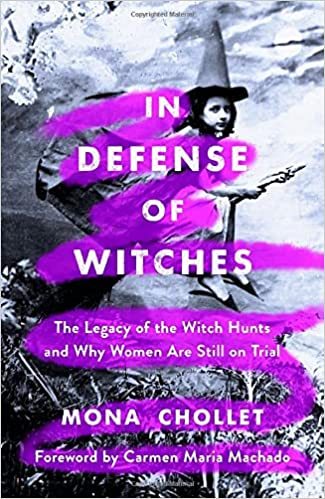
124. In Defense of Witches: The Legacy of the Witch Hunts and Why Women are Still on Trial by Mona Chollet, translated by Sophie R. Lewis. This book, originally in French, is an examination of how traits that the “witches” of the Early Modern Era were demonized and murdered for are still punished in modern society. The book is organized by those traits—independence, birth control and abortion, old age and medical knowledge—but the topics often run far afield, making those more guidelines than strong chapter topics. The book really isn’t much about witches, but is a good accessible text about feminism. It might pale for me a little bit because I recently read Dead Blondes and Bad Mothers, which I liked more, but this is still a solid book.

125. Ten Tomatoes that Changed the World by William Alexander. This is a food history about tomatoes, divided roughly into thirds. The first third is how tomatoes were adopted as crops by Europeans and Americans, slowly and hesitantly at first, but eventually with enthusiasm. The second third covers the development of tomato recipes; the facts and myths about the development and global spread of pizza, ketchup and tomato sauce on pasta. The final third covers the rising and falling of various tomato cultivars; how hybrid seeds took over, why the fast food tomato tastes terrible and the backlash to this. The book is a breezy read; the author’s voice is strong but not overpoweringly so, and there’s a memoir element that crops up in places, like when the author visits the “original” pizzeria in Naples and visits a greenhouse growing tomatoes in a Canadian winter. One of the better food history books I’ve read recently.
#reading log#food history#tomatoes#witches#feminism#monster book#numenera#fabric#textiles#material science#european history#racism#antisemitism
5 notes
·
View notes
Text
Alan Turing, Cybernetics and the Secrets of Life /
-Brenner, S. (2012). Turing centenary: Lifes code script. Nature, 482(7386), 461-461. doi:10.1038/482461a
-Copeland, J. (2004). The essential Turing. Oxford: Oxford University Press.
-Heims, S. J. (1987). John Von Neumann and Norbert Wiener: From mathematics to the technologies of life and death. Cambridge, MA: MIT Press.
-Heims, S. J., & Heims, S. J. (1993). Constructing a social science for postwar America: The cybernetics group, 1946-1953. Cambridge, MA: MIT Press.
-Hofstadter, D., & Teuscher, C. (2004). Alan Turing: Life and legacy of a great thinker ; with 4 tables. Berlin: Springer.
-Kay, L. E. (1993). The molecular vision of life: Caltech, the Rockefeller Foundation, and the rise of the new biology. New York: Oxford University Press.
-Kay, L. E. (2001). Who wrote the book life?: A history of the genetic code. Stanford, CA: Stanford University Press.
-Mcculloch, W. S., & Pitts, W. (1943). A logical calculus of the ideas immanent in nervous activity. The Bulletin of Mathematical Biophysics, 5(4), 115-133. doi:10.1007/bf02478259
-McCulloch, W. S. (1965). Embodiments of mind. Cambridge, MA: The MIT Press.
-Neumann, J. V., Neumann, J. V., & Neumann, J. V. (1958). The computer and the brain. New Haven: Yale University.
-Pias, C. (2016). Cybernetics - the Macy Conferences 1946-1953: The complete transactions. Zurich: Diaphanes.
-Teuscher, C. (2002). Turings connectionism: An investigation of neural network architectures. London: Springer.
-WIENER, N. (1948). CYBERNETICS OR CONTROL AND COMMUNICATION IN THE ANIMAL AND THE MACHINE. S.l.: MIT PRESS.
-Wiener, N. (1950). The human use of human beings: Cybernetics and society. New York: Da Capo Press.
-Wiener, N. (1966). God and Golem, Inc. Cambridge, MA: M.I.T. Pr., Massachusetts Inst. of Technology.
youtube
0 notes
Text

CLICK THE LINK ABOVE FOR THE FULL REVIEW
THE EXORCIST: BELIEVER pretty much met all of my low expectations, not doing much in adding to the legacy of an iconic horror film from fifty years ago. The film is kind of dull for the most part, as it's not scary nor does it have tension or suspense. The exorcism portion feels like a watered down version of what we’ve seen before [in this franchise and other exorcism movies] despite having more characters involved. There are subplots that pop up in the final half that could have elevated this movie, but are rushed through without leaving much of an impact or excitement for the next installment. David Gordon Green’s direction isn’t all that different from what he did with his HALLOWEEN trilogy, even if the cinematography is quite nice. And the use of Ellen Burstyn - the less said about it, the better.
That being said, the acting is quite good - in particular Leslie Odom Jr, the two possessed girls [Lidya Jewett and Olivia Marcum] and Ann Dowd as a nurse with a past. The first half, which plays out like a true crime/missing persons type of movie, is actually quite compelling as it builds character development and sets up for what’s to come. And as I mentioned, the look of the film is nice.
Other than that, THE EXORCIST: BELIEVER isn’t the best possession movie of 2023. Hell, it’s not even the best film with the word “Exorcist” in the title this year [hey Russell Crowe]. I don’t think this is the worst film in the franchise, but at least EXORCIST II: THE HERETIC had balls. Maybe David Gordon Green or whoever could add some for THE EXORCIST: DECEIVER in 2025. The power of Christ doesn’t compel me to be excited for whatever comes next. What a shame.
#horror#horror movies#review#full moon reviews#supernatural#demons#2023#the exorcist#the exorcist believer#david gordon green#blumhouse#universal studios#possession#leslie odom jr#ellen burstyn#ann dowd
0 notes
Link
#AnnDowd#DavidGordonGreen#EllenBurstyn#JenniferNettles#LeslieOdomJr.#LidyaJewett#NorbertLeoButz#TheExorcist:Believer
0 notes
Text
Green Bay Packers logo designer John Gordon dead at 83

Artist Behind Green Bay Packers' Iconic "G" Logo Passes Away at 83
John Gordon, the talented artist who played a crucial role in crafting the iconic "G" logo for the Green Bay Packers, has passed away at the age of 83. His legacy, forever linked to the beloved football franchise, lives on.
Gordon's peaceful passing took place last Saturday, as confirmed by Matt Cotter, the owner of Cotter Funeral & Cremation Care in De Pere, Wisconsin. Alzheimer's disease had been a part of his life in recent years, but in his final moments, he was surrounded by his loving family.
Back in 1961, John Gordon was an art student at St. Norbert College when opportunity came knocking. He was working as an assistant to the Packers' equipment manager, Gerald "Dad" Braisher, when he received a unique chance. Coach Vince Lombardi himself requested a new logo for the team, and it had to feature a "G" inside a football shape.
In Gordon's own words, "Dad came down from his meeting with Lombardi with a piece of paper in his hand, and he said that Lombardi wants a logo ... and it’s going to be a ‘G’ in a football shape." In a matter of just 24 hours, Gordon's design received the green light, and thus, the original Packers' logo was born.
Today, you can find John Gordon's name and his initial sketch proudly displayed at the Packers Hall of Fame museum at Lambeau Field, a testament to his artistic contribution to the team's history.
The logo, originally resembling a football, has evolved over the years into the familiar oval "G." Contrary to popular belief, it's not just a symbol of greatness; it stands for Green Bay, as noted by Packers team historian Cliff Christl.
Beyond his work with the Packers, John Gordon was a lifelong artist. He shared his passion by teaching art at Parkview Middle School in Ashwaubenon and later served as an adjunct professor of art at his alma mater, St. Norbert College.
John Gordon is survived by his wife, Dianne, his ex-wife, Joan Gordon, and their six children, three grandchildren, a brother, a sister, and three stepchildren. His life touched many, both within and beyond the football world.
A funeral to honor John Gordon's memory will take place on Wednesday at Faith Lutheran Church in Green Bay. While he may be gone, his legacy continues to shine through the "G" that proudly represents the Green Bay Packers.
Read the full article
0 notes
Text
youtube
The Exorcist: Believer "Legacy" Featurette
The cast and crew of The Exorcist: Believer talk about the original film and continuing the franchise.
Angela and her friend Katherine disappeared into the woods, returning three days later with no memory of what happened to them. As Victor Fielding, Angela's dad, faces the emerging evil, he turns to the only person alive who has witnessed anything like what is happening to the girls - Chris MacNeil.
The Exorcist: Believer stars Ellen Burstyn (Chris MacNeil), Lidya Jewett (Angela Fielding), Olivia Marcum (Katherine), Leslie Odom Jr. (Victor Fielding), Ann Dowd, Jennifer Nettles, Norbert Leo Butz. David Gordon Green directs from a screenplay by Peter Sattler and David Gordon Green, from a story by Scott Teems, Danny McBride, and David Gordon Green.
The Exorcist: Believer hits theaters on October 6, 2023.
The Exorcist: Believer is the first in a planned trilogy. The second film, The Exorcist: Deceiver is currently scheduled to release on April 18, 2025.
#exorcist#exorcist believer#ellen burstyn#lidya jewett#olivia marcum#leslie odom jr#ann dowd#jennifer nettles#norbert leo butz#david gordon green#scott teems#danny mcbride#universal pictures#TGCLiz#Youtube
0 notes
Text

Train Like A Pro With Top-Notch Gymnastics Supplies
Norbert's Athletic Products, Inc. is the ultimate destination for gymnastics supplies. With a legacy of excellence, they offer a comprehensive range of equipment and gear for gymnasts of all levels. From mats and bars to grips and accessories, they have it all. For more information, visit norberts.net.
0 notes
Text

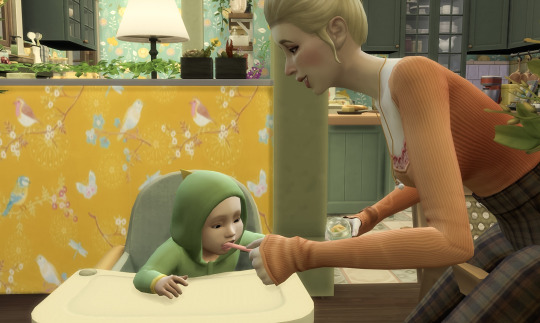
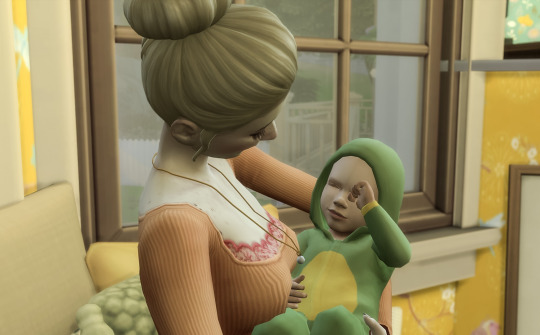
#sims 4#ts4#sims 4 legacy#the norberts legacy#the norberts#Nora Notley#Nicholas Norberts#sims 4 screenshot#sims 4 gameplay#the sims 4
3 notes
·
View notes
Text






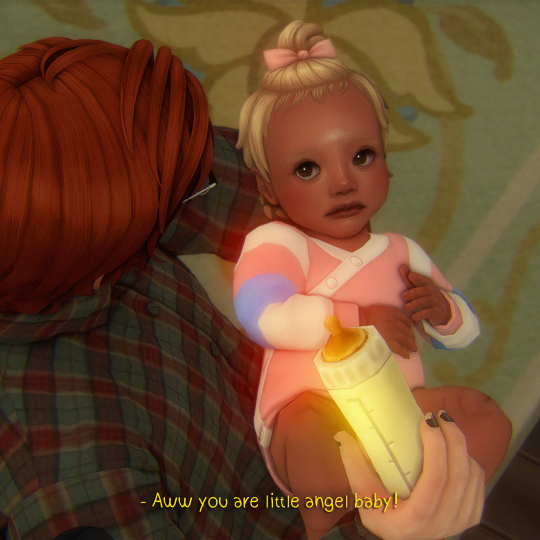


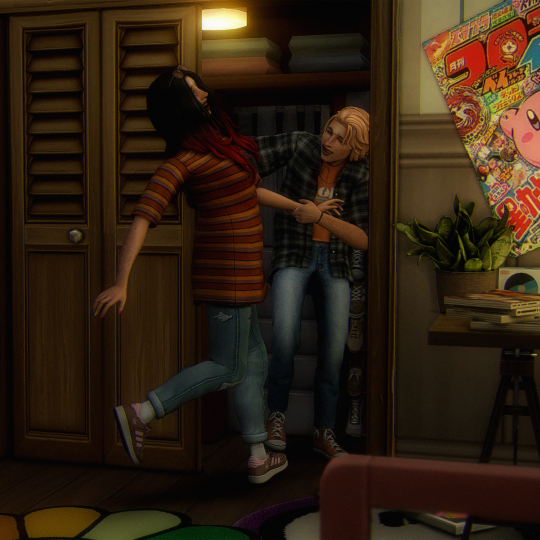


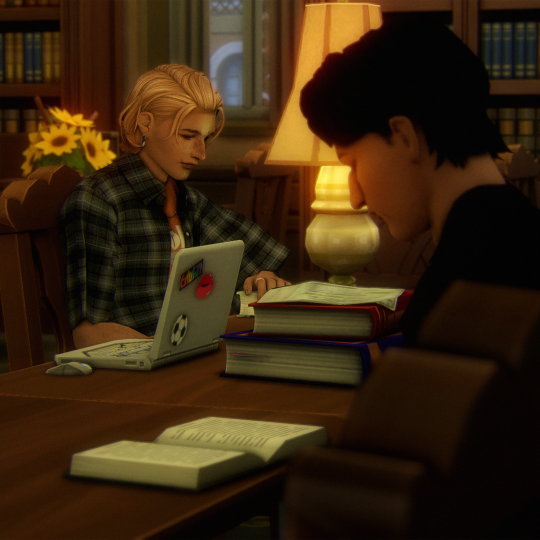
Random gameplay pics with teens <3
#sims 4#ts4#sims 4 gameplay#sims 4 legacy#valter legacy#ts4 legacy#Zakary Flinn#Mailo Flinn#Radhika Basu#Nigel perish#Ranj Basu#Vic Perish#Norbert Goth#ts4 gameplay#sims gameplay
25 notes
·
View notes
Photo
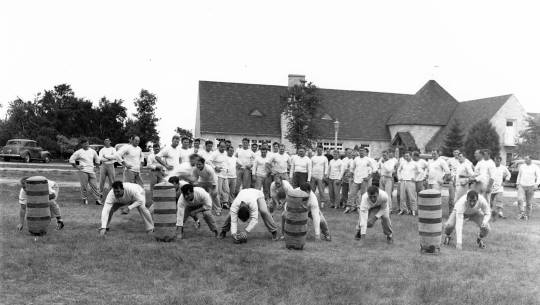
New Post has been published on https://www.packernet.com/blog/2023/05/30/training-camp-green-bay-packers-and-the-birthplace-of-champions/
Training Camp - Green Bay Packers and the Birthplace of Champions
When it comes to the storied history of the Green Bay Packers, one cannot overlook the significance of their training camp. Nestled in the heart of Green Bay, Wisconsin, this small Midwestern city has been the breeding ground for champions, shaping the team’s legacy and contributing to their unparalleled success in the National Football League (NFL). Join us as we delve into the captivating history of the Green Bay Packers’ training camp and its impact on the team’s enduring tradition.
Origins and Early Years
The origins of the Green Bay Packers training camp can be traced back to the team’s humble beginnings in 1919. Back then, the Packers were an amateur team led by Earl “Curly” Lambeau and George Calhoun. They practiced at Hagemeister Park, a local recreational area, and nearby Bellevue Park. However, as the team grew in prominence, they recognized the need for a dedicated training facility.
Before we move on, Looking for a delicious and effective way to consume your daily cannabidiol? Check out https://askgrowers.com/cbd/10mg-cbd-gummy. You will find a flavor and strain for every taste or mood. Find a good one for game days!
Foundational Years at Rockwood Lodge
In 1946, the Packers established their first official training camp at Rockwood Lodge, a serene property situated on the outskirts of Green Bay. The lodge, previously owned by the Cofrin family, provided a secluded and picturesque environment for players to focus on honing their skills. It quickly became a place of camaraderie, discipline, and hard work.
Rockwood Lodge remained the Packers’ training camp for over two decades, witnessing numerous successes and helping shape legendary players. Under the guidance of iconic coaches like Vince Lombardi, the Packers secured five NFL Championships and the first two Super Bowl titles during their tenure at Rockwood Lodge.
A New Era: St. Norbert College
In 1995, the Packers’ training camp underwent a significant change when they moved their operations to St. Norbert College in De Pere, a neighboring city. The decision brought the team closer to its fanbase while providing modern amenities and ample facilities to accommodate the growing demands of a professional football team.
St. Norbert College became the perfect host for the Packers’ training camp, keeping the team close to its state-of-the-art training facilities, and easy access for fans to observe practices. The Packers’ Don Hutson Center, named after the legendary Packers receiver, serves as an indoor practice facility, allowing the team to train regardless of the unpredictable Wisconsin weather.
The Intangible Spirit of Green Bay
Beyond the training facilities themselves, what truly sets the Packers’ training camp apart is the spirit of Green Bay and its unwavering support for the team. The city of Green Bay has a unique bond with its football team, unparalleled by any other city in the NFL. In the old days during training camp local residents would open their homes to players, creating an atmosphere of warmth, hospitality, and genuine passion for the game.
The annual Packers Family Night practice, held at Lambeau Field, has become a cherished tradition, drawing thousands of fans eager to catch a glimpse of their favorite players. The support and dedication from the fans make the training camp experience in Green Bay truly special.
Enduring Success and the Road Ahead
The Green Bay Packers’ training camp has been a foundation for the team’s long-standing success. It has forged a culture of hard work, perseverance, and unity that has permeated through generations of players. From the Lombardi-era dynasties to the modern successes led by the likes of Brett Favre and Aaron Rodgers, the training camp remains an integral part of the Packers’ identity.
As the Packers move into the future, their training camp will continue to be a critical element in building winning teams. The combination of the team’s rich history, the passion of its fans, and the excellent facilities in Green Bay ensures that this tradition will persist for years to come.
0 notes
Text
June 5 2022 Lafayette and Boulder

Today at our Bouldlder Valley Unitarian Universalist Fellowship (BVUUF) Sunday service it was Flower Communion Sunday. This is one of my favorite services of the year. It was lovely to see all the flowers everyone had brought, all the different shapes and colors. It is a tradition celebrated by Unitarian Universalists around the world in honor and memory of Norbert Capek and the amazing example of the strong spirit of this great man who was killed by the Nazis during the occupation of Czechoslovakia. While the story of Norbert Capek is tragic and sad his legacy is uplifting and beautiful.

According to the Harvard Square Library:
“Norbert Fabian Čapek was born June 3, 1870 in the village of Radomysl in Bohemia (then a part of the Austro-Hungarian Empire). He was a raised as a Roman Catholic (then the dominant state-supported religion), but became a Baptist at the age of eighteen, and soon thereafter began a career as a minister, missionary, publicist, and composer of hymns. He served a congregation in Saxony for three years, then moved to Moravia, where he established a new congregation. In 1901 he was elected chair of the Union of Baptist Churches of Moravia and Slovakia. He published religious journals and became the assistant editor of a popular literary magazine. His religious stance became increasingly liberal, influenced by the “social gospel” movement of Walter Rauschenbausch and by the study of radical Christian movements in Czech religious history.
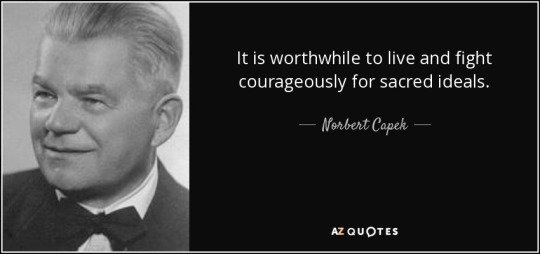
Čapek first became interested in Unitarianism in 1910, as a result of a meeting with Tomas Masaryk (then a professor, later to be President of Czechoslovakia). Čapek tried that year, without success, to get the American Unitarian Association to support his efforts to promote liberal religion.
At the beginning of World War I in 1914, Čapek moved to the United States, after being advised that he was in danger of arrest by Austrian authorities because of his nationalistic and anti-Catholic writings, Early in 1915 he was tried for heresy by a Baptist tribunal, but acquitted, and for the next three years he was pastor of the First Slovak Baptist Church in Newark. During this time he organized an alliance of the various Slovak associations in New Jersey, and was active in the movement for Czechoslovak independence.”
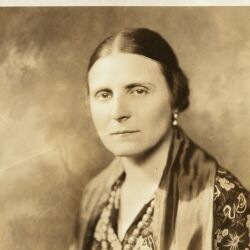
From the First Unitarian Church of Essex County website:
Maja V. Oktavec, born April 8, 1888 in Bohemia, came to the United States in 1907, obtained a degree from the Columbia University School of Library Science, and in 1909 went to work at the Webster Branch of the New York Public Library. In 1914 she was put in charge of its Czech section. There she met Norbert Čapek. They were married June 23, 1917. (Čapek had already been married and widowed twice, and had nine children.) Maja resigned her position at the library a week after their marriage. They bought a home in Belleville, and in 1919 Čapek became pastor of a small congregation there. But in September of that year, having come to the conclusion that he could no longer be a Baptist, he resigned his pastorate.”
From the Harvard Square Library:
“At the end of World War I, Czechoslovakia became independent, and many Czechs decided to leave the Roman Catholic church. Čapek was eager to return to his native land and play a part in its spiritual reawakening....He and Maja... had joined First Unitarian Church of Essex County... The minister, Dr. Walter Reid Hunt, learning of Čapek’s intent to return to Czechoslovakia, arranged for him to meet the president of the American Unitarian Association, Dr. Samuel A. Eliot. By May, Čapek had a commitment from the AUA to support his work in Czechoslovakia...He and Maja embarked for Europe June 30.”
From the First Unitarian Church of Essex County website:
“By February 1922, Čapek had organized the Prague Congregation of Liberal Religious Fellowship, and the services were soon drawing standing-room-only crowds. On June 24, 1923, the first Flower Communion was celebrated. Maja was ordained as a minister in 1926. For several years the fellowship met in rented halls. With financial help from the AUA and the British and Foreign Unitarian Association, they acquired and renovated a medieval palace. In 1930 the Unitarian Church of Czechoslovakia was officially recognized by the Czech government.
In 1939, shortly before the German occupation of Czechoslovakia, Maja Čapek left for the United States to lecture and raise funds for a joint Unitarian-Friends program to assist endangered refugees and internees.

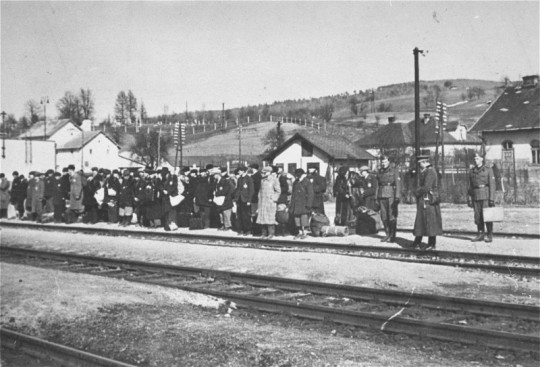
On March 28, 1941, Čapek and his youngest daughter Zora were arrested by the Gestapo. They were convicted of listening to foreign radio broadcasts. Čapek was sentenced to a year in prison, but eleven months that he had already been confined while waiting for trial were to be counted in the sentence. (Zora, who had not only listened to the broadcasts but shared notes of them with someone else, was given an eighteen-month term). In the midst of a wave of executions and deportations of Czechs by the Nazis following the assassination of Reinhard Heydrich (the German official in charge of the occupied country), a Gestapo officer overrode the court's sentence and ordered that Norbert Čapek be sent to the concentration camp at Dachau, "return unwanted." He arrived there July 5, 1942. and on October 12, 1942 was sent on an "invalid transport," and evidently killed that day with poison gas, though his official death certificate states that he died October 30 of a cerebral hemorrhage.
Maja Čapek did not learn of Norbert's death until after the war. After her lecture tour, she served as a minister in New Bedford, Massachusetts, for three years. From 1944 to 1950 she worked for the United Nations Relief and Rehabilitation Agency, helping displaced persons settle in Yugoslavia, Egypt and Palestine. She died December 1, 1966.”


The School of The Spirit teachers presented a lovely exercise in creativity. Their clothing also was colorful and resembled flowers!

During the service everyone was invited to come to the table containing a flower and take one other than the one they had brought. It was a touchingly beautiful service and we all left with a reminder of the power of hope and courage.
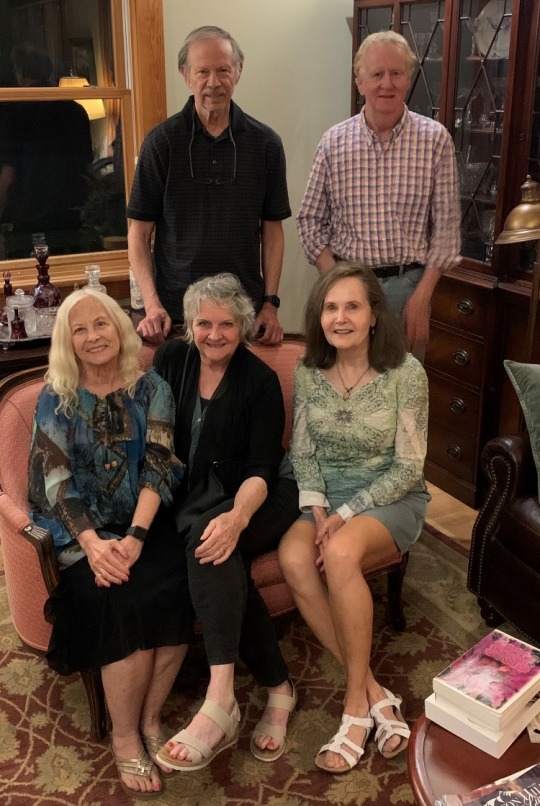
This evening we went to a potluck at our friends Barbara and Mark’s house in North Boulder. Our other friends, Shoni and Gary, were there too. Barbara, Shoni and I met MANY years ago at a Boulder Business and Professional Women’s meeting and have been friends ever since. Our husbands joined our friendship over the years. We had a tour of Barbara and Mark’s remodeled house and yard and we were lucky that the weather was good enough, at least at first, to eat outside. It did begin to rain when we were finishing so we went inside to have dessert there.
0 notes
Text
Badewannenlifter aquatec beluga bedienungsanleitung hp
BADEWANNENLIFTER AQUATEC BELUGA BEDIENUNGSANLEITUNG HP >> DOWNLOAD LINK
vk.cc/c7jKeU
BADEWANNENLIFTER AQUATEC BELUGA BEDIENUNGSANLEITUNG HP >> READ ONLINE
bit.do/fSmfG
aquatec beluga akkuaquatec badewannenlifter akku laden
Badewannenlift Aquatec Orca Invacare Lift Badewannenlifter. Wuppertal. 10.02.2021 · Badewannenlifter. Mindelheim. 04.05.2021 · Neuwertiger elektrischer Akku Badewannenlifter. Aquatec® Invacare® / Aquatec® Dusch- und Toilettenrollstühle Standard-Fahrpult Shark II (ermöglicht die Bedienung von Licht und.Invacare Aquatec Elan Beluga Fortuna Ladegerät Badewannenlifter TFS095. Gewerblich. EUR 26,90. EUR 5,90 Versand. oder Preisvorschlag. Nur noch 1 verfügbar! Aquatec Beluga DE Badewannenlifter Gebrauchsanweisung Diese Gebrauchsanweisung muss dem Benutzer des Produkts ausgehändigt werden. AQUATEC / Badewannenlifter Invacare Elan / Beluga / Kogia. Bitte beachten Sie: Es wird nur der passende Akkupack (Innenleben) geliefert. AQUATEC ELAN, BELUGA und KOGIA. VE 1 Stück. 380159 • Akku für Badewannenlifter AQUATEC ELAN,. BELUGA und KOGIA (15166). Invacare. Bezug für Badewannenlifter. Ansicht Und Herunterladen Invacare Dolomite Legacy Gebrauchsanweisung Online. Dolomite Legacy Hilfsmittel Pdf Anleitung Herunterladen.
https://wujenitive.tumblr.com/post/693441694087184384/kymco-newsento-50i-bedienungsanleitung, https://kiloqeqidu.tumblr.com/post/693441441737900032/stihl-bt-360-bedienungsanleitung-yamaha, https://mawuvejof.tumblr.com/post/693441490022727680/norbert-huppertz-handbuch-waldkindergarten-germany, https://mawuvejof.tumblr.com/post/693441217256701952/wae283v6-bedienungsanleitung-deutsch, https://wujenitive.tumblr.com/post/693441393568432128/6ed1052-1md00-0ba7-handbuch-webasto.
0 notes